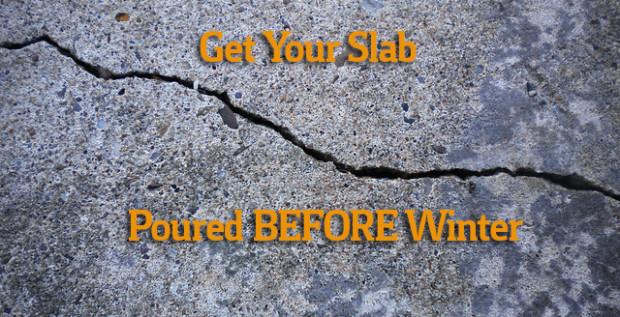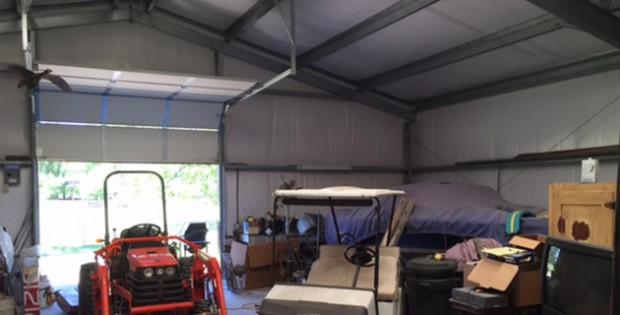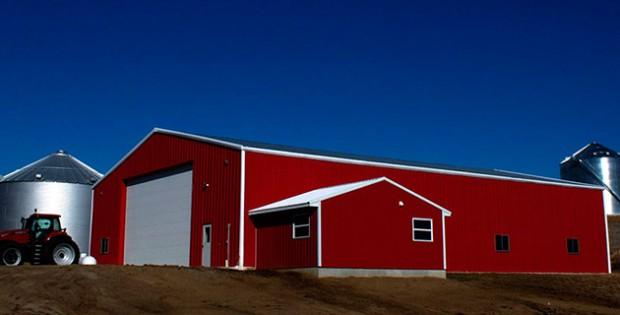Get Your Steel Building’s Slab Poured Before Winter

When erecting a custom metal building, whether it’s a garage, workshop or hangar, there are certain procedures that must be followed. As winter draws closer and closer, it is important to take steps to protect your custom metal building from the weather. The most important thing you can do is get your concrete foundation laid as soon as possible. It is a lot of time and work to lay a foundation in the winter and a lot of upkeep is required once it is laid. Not to mention, there are several hazards with laying your concrete foundation in the winter.
If you pour your slab foundation on top of frost or frozen dirt, moisture is likely to become trapped under your foundation. This will ultimately lead to frost heaves that crack your slab. Digging and properly preparing the ground can be impossible when the ground is frozen. There are ways to thaw the ground to pour a proper slab, but there is no guarantee against moisture caught under your slab.
If you must pour concrete in the winter, prepare well. Make sure your concrete has low slump, and minimal water to cement ratio to reduce bleeding and decrease setting times. Once the concrete is poured, use concrete curing blankets to prevent freezing or, use insulation blankets and heated enclosures to maintain concrete temperatures above 50 degrees Fahrenheit for three to seven days.
Fresh concrete frozen during the first 24 hours can lose 50% of its potential 28 day strength.
If your concrete freezes during the first 24 hours, hydration can’t occur. Hydration (also known as the curing process) occurs when the chemicals in the concrete react with water to bind the mixture together. In order for hydration to occur, the temperature of the concrete has to be 40 degrees Fahrenheit.
 One way to increase temperatures during the hydration period is to add additional cement to the mix. Temperature can also be increased by heating the components. Heating the aggregates in the mix is a solution, or you can heat the mixing water added to the cement. Chemical accelerators exist to add to the mix, which helps speed the hydration process. DO NOT use the aggregate calcium chloride when pouring a foundation for your custom metal building, as calcium chloride can cause corrosion to any steel used in the concrete.
One way to increase temperatures during the hydration period is to add additional cement to the mix. Temperature can also be increased by heating the components. Heating the aggregates in the mix is a solution, or you can heat the mixing water added to the cement. Chemical accelerators exist to add to the mix, which helps speed the hydration process. DO NOT use the aggregate calcium chloride when pouring a foundation for your custom metal building, as calcium chloride can cause corrosion to any steel used in the concrete.
The problems associated with a potentially cracked slab are numerous. From crushed pipes to uneven floors and even cracks in walls and ceilings, these complications are costly to fix at a later date.
The best way to avoid cracks in your site’s slab foundation is to pour a lot of slabs now, before it freezes, that way you can work on constructing the main part of the project during the winter. Metal materials are less likely to foundationally change during the winter, though your workers might slow down during the cold months.
Stay working all winter, don’t hibernate. Close deals now and pour as many foundations, as fast as you can, before winter sets in. Make your clients happy with the best custom metal building they can get.
Read more tips for contractors on our Contractor Central Network.
Photo courtesy: stephen jones, katrina johnson« 5 Great Construction Safety Tips
Is Your Business Growing Too Big For Its Breeches? »
Popular Posts

I’ve seen steel buildings increase in popularity every day because builders use these durable, versatile and flexible construction solutions in every application. Not only have homeowners utilized a steel building for residential purposes, but builders have also made additions to their existing property. No doubt that a steel building garage will increase the value of a home, …
Will Adding a Steel Building Increase My Property Value? Read More »

What is the first step of a steel building project, or any construction project for that matter? After you decide to add a new garage, agricultural or commercial building to your property, you’ll most likely start contacting steel building manufacturers for steel building quotes. From there, you can create a timeline for yourself and develop …
Steel Building Quotes: Get a Grasp on Prices and Estimates Read More »
